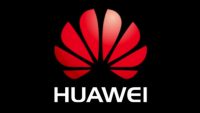Huawei, Apple Drop in Rankings of Top Global Phone Makers
November 3, 2020
After attaining a position as No. 1 in global smartphone shipments in Q2, Huawei Technologies ceded that position to Samsung Electronics in Q3, according to International Data Corporation. IDC added that Huawei’s global shipments fell by 22 percent, a sign that U.S. efforts to disrupt its supply chain are having an impact. All vendors without a license from the U.S. Commerce Department have been banned from selling chips and other components to Huawei since September 15. Huawei’s domestic sales also fell 15+ percent in Q3.
The Wall Street Journal reports that, according to IDC analyst Will Wong, “Huawei has been slowing down its distribution of devices to stores, so as not to run down its inventory too soon.” “If they can last longer in the market, this can give confidence to consumers and to the supply chain as well,” he explained. Huawei denied the claim, saying it is “fulfilling its channel orders normally.”

Huawei debuted the Mate 40, its latest flagship phone, earlier this month and, said Huawei, likely the last phone to integrate its “self-designed Kirin chip.” Several chipmakers have “applied for licenses from the Commerce Department to resume shipments to Huawei, and a small number have received them,” said sources, who added that, “Samsung’s display manufacturer received approval from the U.S. to sell certain types of smartphone panels to Huawei.”
Huawei also stockpiled chips and other components prior to the ban taking effect.
VentureBeat reports that, according to Canalys, Xiaomi is in third place among smartphone vendors, with Apple slipping into fourth place, “the first time the iPhone maker has missed the top three in at least 12 years.” It’s also the first time that Xiaomi has made it into the “ranks of the top three smartphone vendors.” Xiaomi “grew its shipments by 45 percent year-on-year (YoY), shifting 14.5 million more units.”
In Europe, a key Huawei market, “Xiaomi shipments grew by 88 percent while Huawei fell 25 percent.” According to Canalys senior tech analyst Ben Stanton, “the last time Apple missed the top three was back in the days when Nokia ruled the roost and Apple was battling Motorola for third place.” It has been a top three vendor since Q3 2008.
Canalys analyst Shengtao Jin stated Samsung’s recovery was due to “pent-up demand” from Q2 spilling over into Q3. Also aiding Samsung was growth in India, “adding a handful of low- to mid-range smartphones and shifting to more online sales.” According to VB, “the takeaway from this Canalys report is that Samsung’s smartphone brand remains strong, while Xiaomi appears to be capitalizing on Huawei’s U.S. trade tussles.”
Engadget reports that sources at Financial Times “claim Huawei is planning a dedicated chip factory in Shanghai that would make parts for its core telecom infrastructure business.” The Shanghai Integrated Circuit R&D Center (ICRD), supported by the city, would run the venture, which would “be considered experimental until it’s ready to make chips Huawei can use.”
The center would “start by making chips based on a very old 45-nanometer process before moving to 28nm chips by late 2021” and reach 20nm by late 2022, which would be sufficient for “most” of its 5G hardware.

No Comments Yet
You can be the first to comment!
Sorry, comments for this entry are closed at this time.